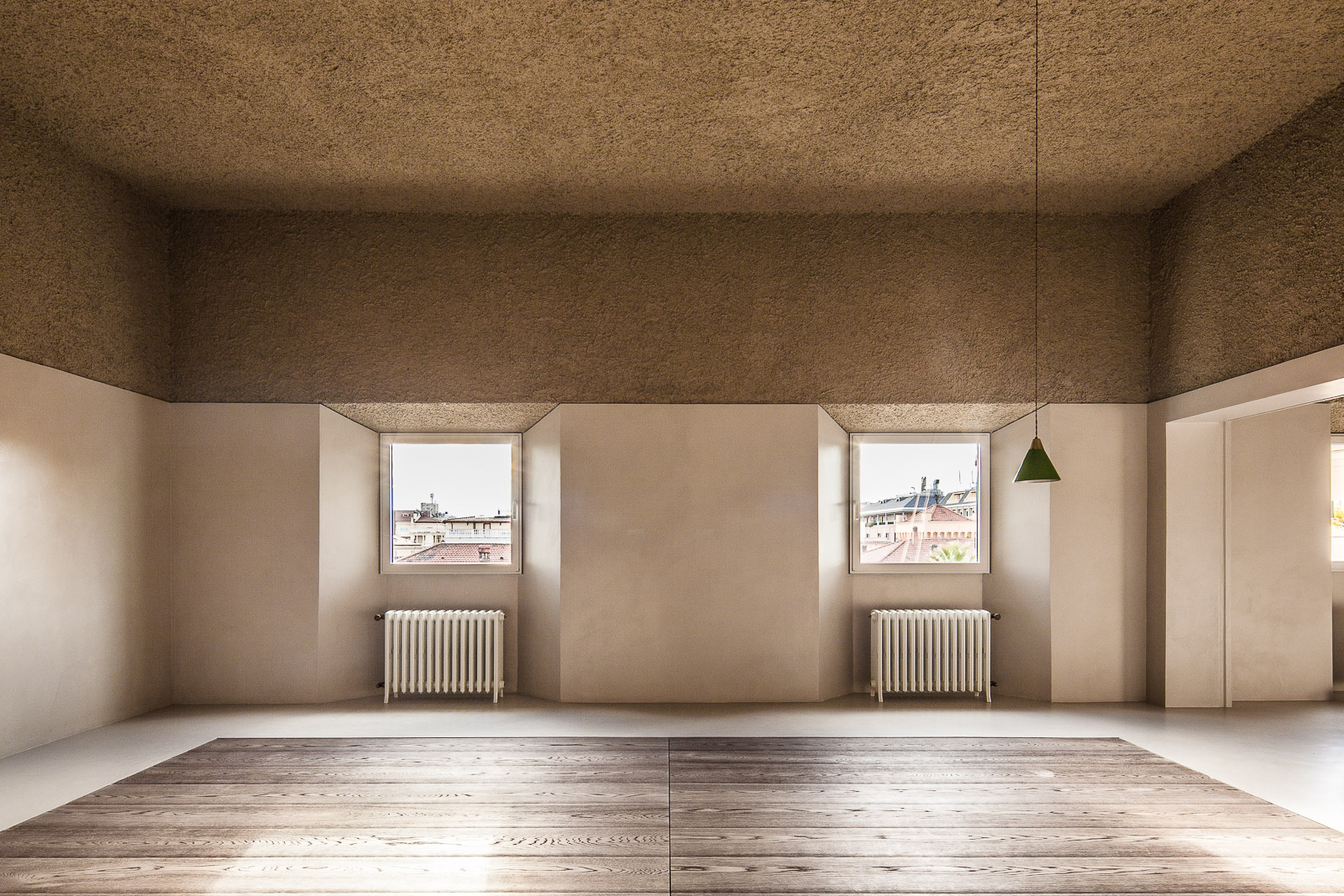Review
Haim Kapon
The Italian architect Antonio Cardillo does not conform to traditional styles and refuses to adapt himself to existing styles. The apartment he designed in Rome is a multi-layered intellectual architectural creation presenting a challenging aesthetic.
The Italian architect Antonino Cardillo deserves the title of ‘Renaissance Man’ for several reasons. He is deeply connected to classical architecture, draws artistic inspiration from the Renaissance, designs furniture, writes poems through which he tries to explain his creations, and escapes modernity as if it were a malignant disease. Dust and dirt are the main and surprising heroes of House of Dust, an apartment of only 100 square meters into which the architect Antonino Cardillo has poured his comprehensive doctrine. House of Dust is a minimalist, groundbreaking creation that goes against the flow of modernist clichés. Cardillo himself, who accompanies his creations with poems attempting to explain them, writes: ‘Modernity that denies the sediment of the past, shaves walls, disinfects spaces, this modernity that denies dust also denies death […] It is devoid of memories and therefore worships youth’ and as if these words were not enough to understand the architect’s aversion to modernity, he adds another crucial piece of information to understand his works: ‘In this house, the classical order and the golden ratio celebrate dust and dirt’. Two fundamental concepts in art that Cardillo harnesses and uses extensively.
From all these poetic words, House of Dust is created, which is tied to the past with bonds, and yet, contains more than a touch of postmodernism. The architect’s creation is not simple to understand, moreover, it is difficult to define or fit it into common templates, and it requires considerable intellectual effort to decipher the idea behind it and the many layers of meaning contained within it. In each of the apartment’s spaces, the floor and the lower part of the walls have a shiny grey finish, while the upper part of the walls, like the ceiling above them, are coated with rough-textured plaster, in earthy colours. The walls are divided, how could it be otherwise, according to the golden ratio.
The architect hints at caves in his work, with exaggerated, sometimes grotesque elements, rooted in Renaissance architecture, and communicates through faded earth colours with the common colours of the facades of houses on Via Veneto, the famous Roman street close to which the apartment is located. Each window in the apartment is within a deep niche, as if carved into the wall, and each of the openings connecting the spaces is also within deep niches, a significant nod to Italian painting art during the Renaissance. Cardillo reinforced this trend by creating a series of arches hiding doors and closets behind them. The door behind which the private space containing the main bedroom and the adjoining bathroom carries a different character. A pink glass handle on the entrance door hints at what lies behind it, heaps of light pink colour covering the walls and ceilings, a colour Cardillo justifies with these words: ‘A colour yearning for flowers and the hour of dawn, a colour of love’.
Cardillo also designed the oval dining table made of polished and shiny grey marble, which constitutes an intriguing contrast to the rough ceiling above it. House of Dust is primarily a courageous creation, a project that embodies fresh aesthetics and a unique vision with nothing familiar, or even a hint of a cataloged style. It is one of those pioneering, trailblazing creations that sets new trends. In a global world where architects influence each other and tend to adopt uniform, simple, and understandable aesthetic principles for everyone, how refreshing it is to encounter an architect plowing new furrows. Cardillo breaks boundaries, shatters familiar templates, and pours a unique individual character into his works with a new language based on classical principles. All this being said, it is quite clear that this new aesthetic language is not easy to digest and understand and is not intended for everyone; it is very far from the mainstream, deep, different and other, as pioneering works tend to be.
Notes
- ^ The classical order is an architectural style that began in ancient Greece and was adopted by Roman architecture, Renaissance architecture, and the neoclassical style. The classical orders are a collection of formulas defining the proportions in a structure and the relationships between its parts.
- ^ The golden ratio is a mathematical constant (1:1.618) that appears in nature (shells, sunflowers, the human body, etc.) and served as the basis for classical architecture.

Antonino Cardillo, House of Dust, Rome, 2013. Photo: Antonino Cardillo